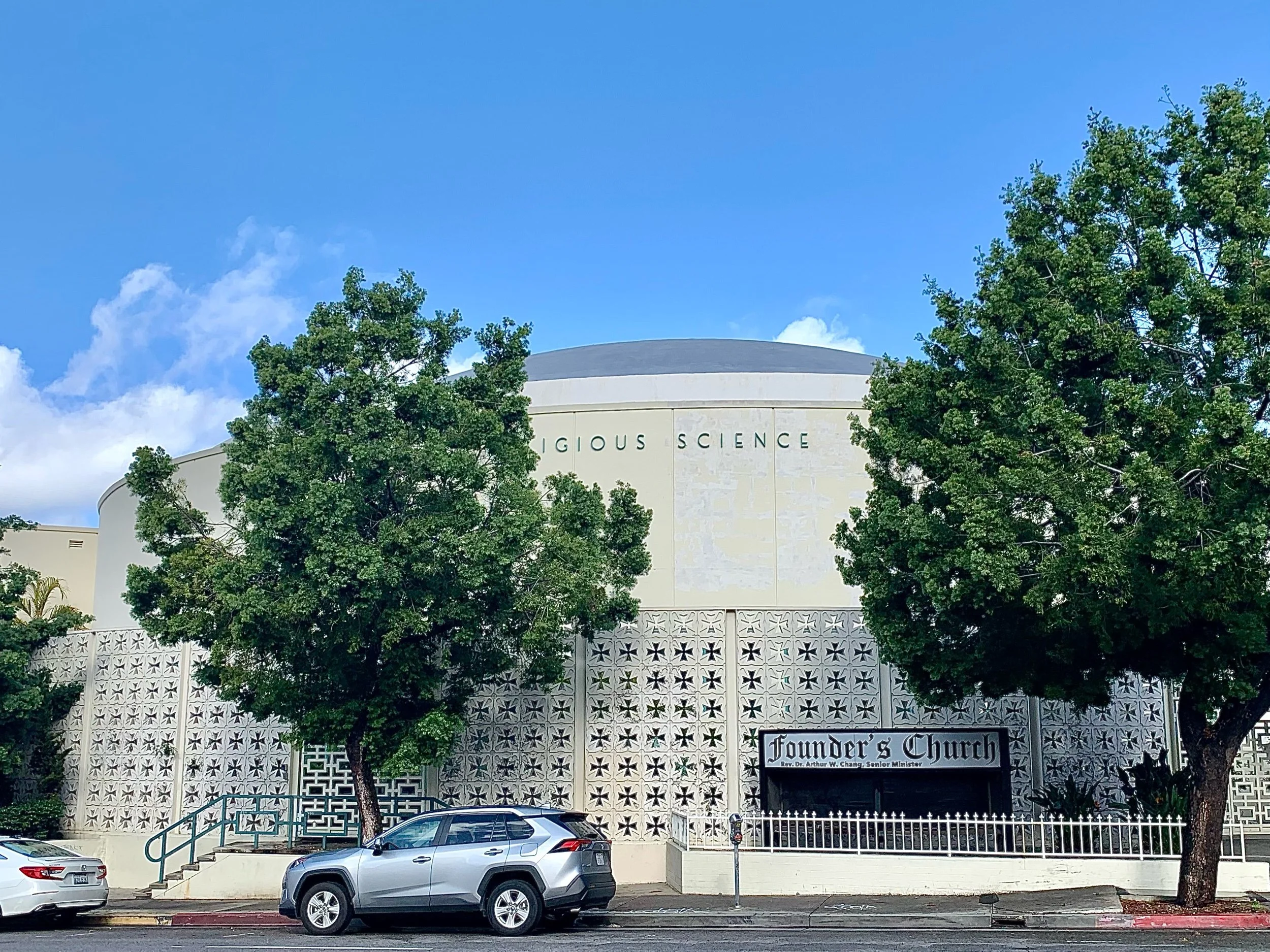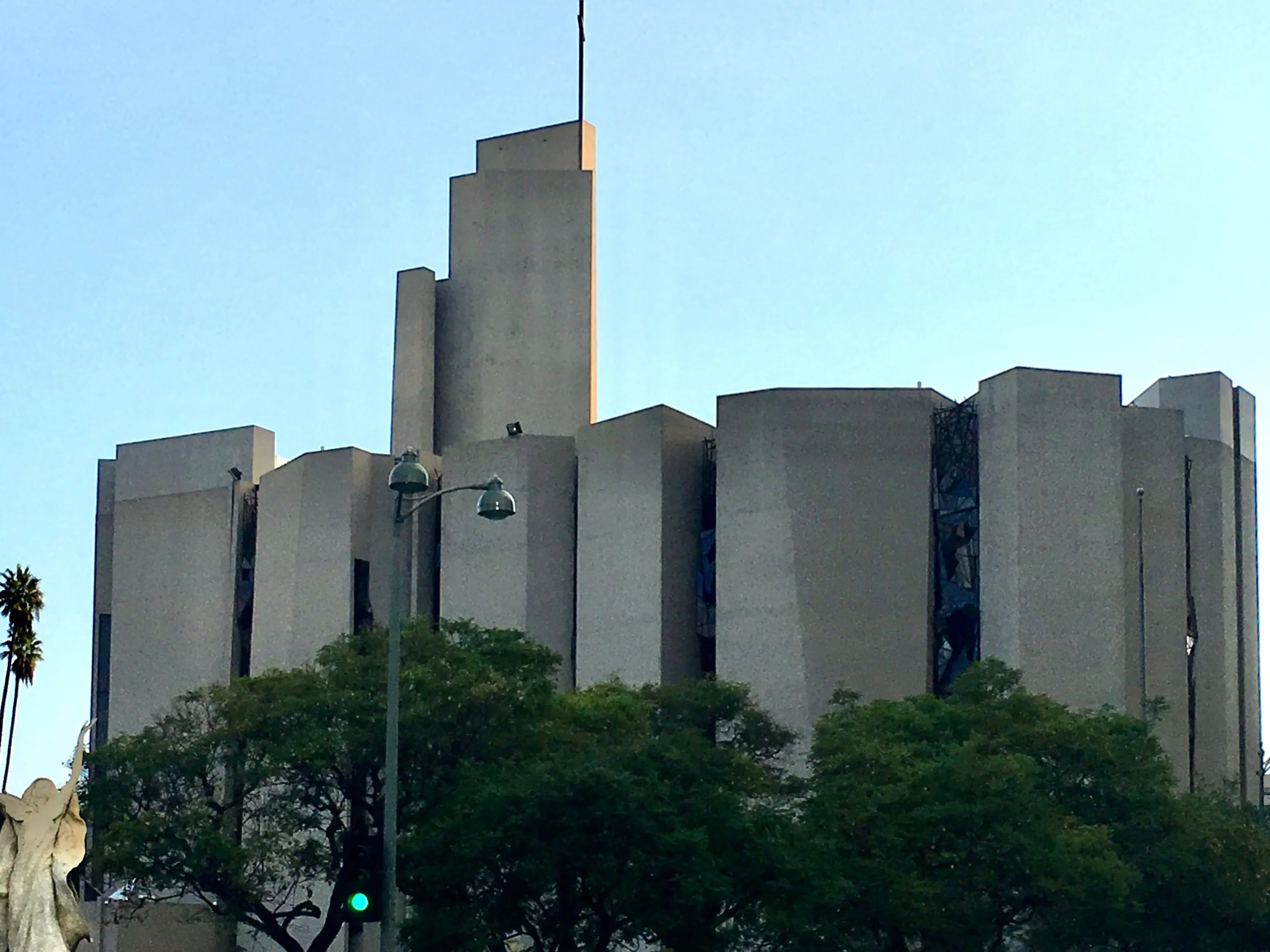A Trio of Spiritual Places
Happened to be in the Wilshire/Korea Town part of LA to meet a friend for lunch and thought I’d stop by the mid-century Founder’s Church of Religious Science designed by Paul R. Williams before our meetup. After lunch I had time to stop by two other spiritual places on the way home. It was a good day!
Founder’s Church of Religious Science, Paul R. Williams, 1960


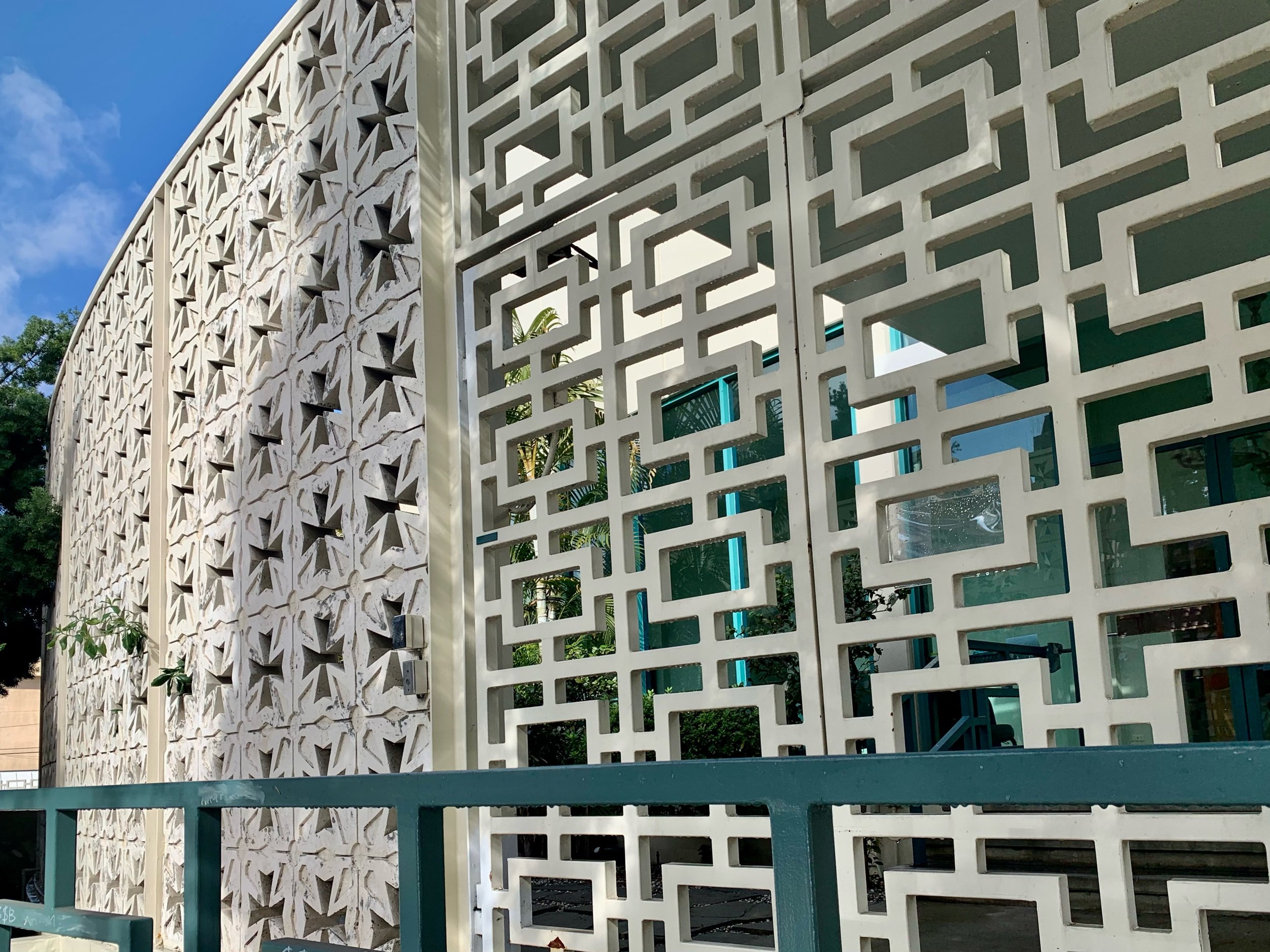
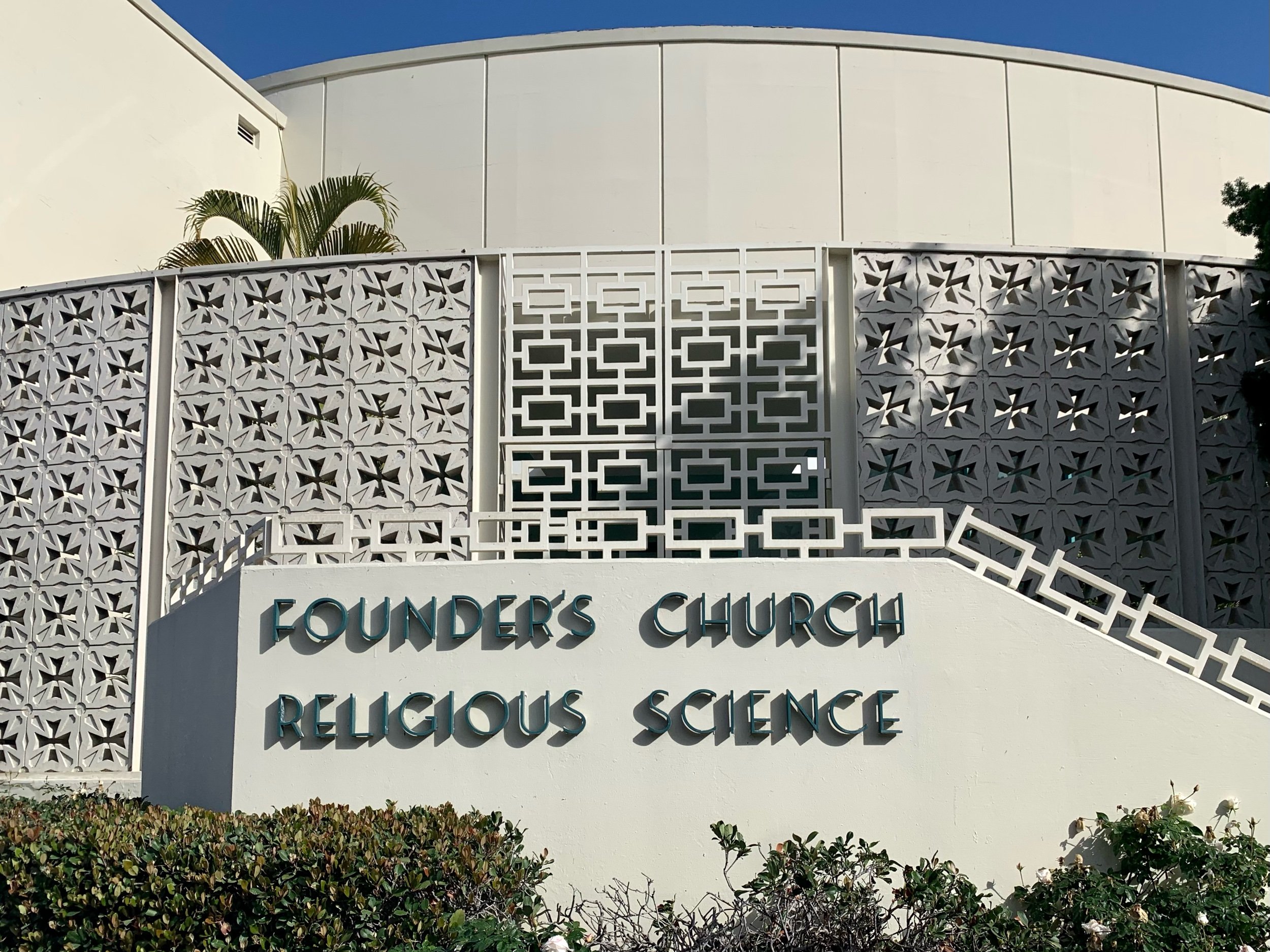
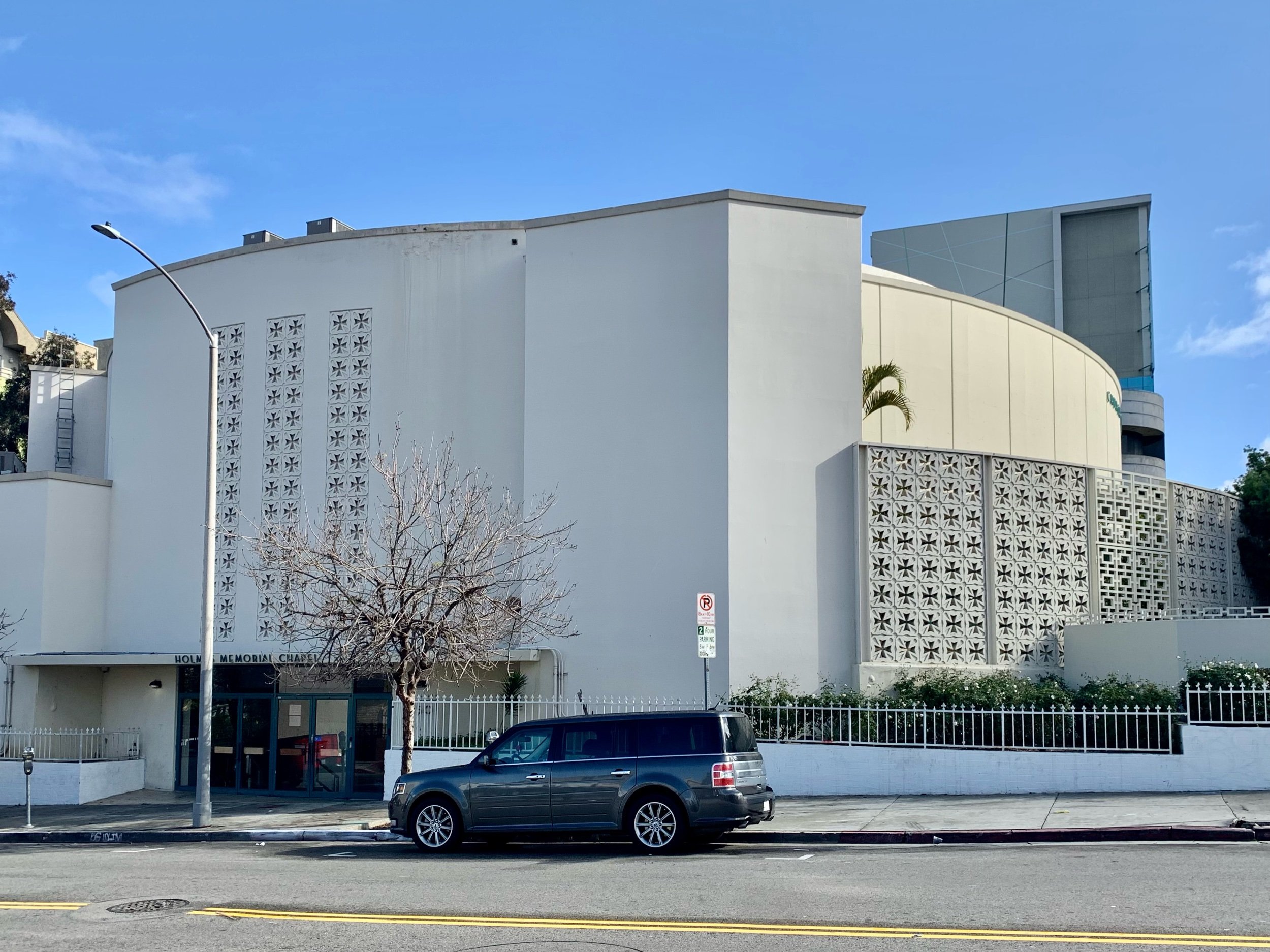
When the Founder’s Church of Religious Science needed a new sanctuary, its members hired renowned architect Paul R. Williams to design it. The church, located at 3281 W. Sixth St., was one of very few religious buildings Williams designed, and is a wonderful example of his Modern buildings.
The description below is from the Los Angeles Conservancy website:
The reinforced concrete building features smooth wall surfaces topped by an enormous steel-framed dome that reached the equivalent of four stories in height. A tall wall of pierced concrete block surrounds the church, enclosing it within a lush green garden and adding substantial visual interest to the unadorned main sanctuary. The wall and the domed structure together have a sort of Moorish flavor presented in a clean and simplified Modern style.
Related post: Architect Corner - Paul R. Williams, Las Vegas
St. Basil Catholic Church, A.C. Martin & Associates, 1969
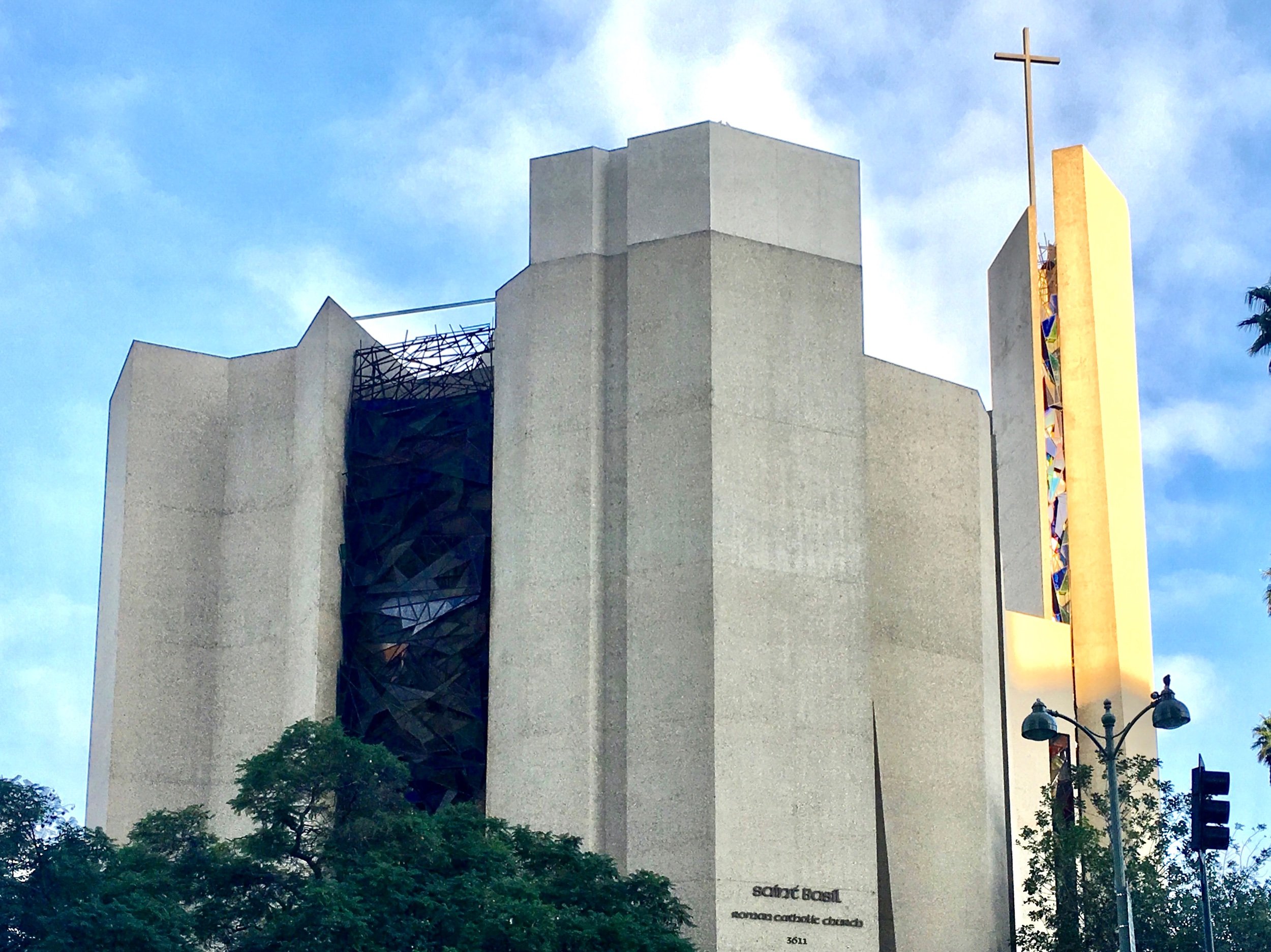

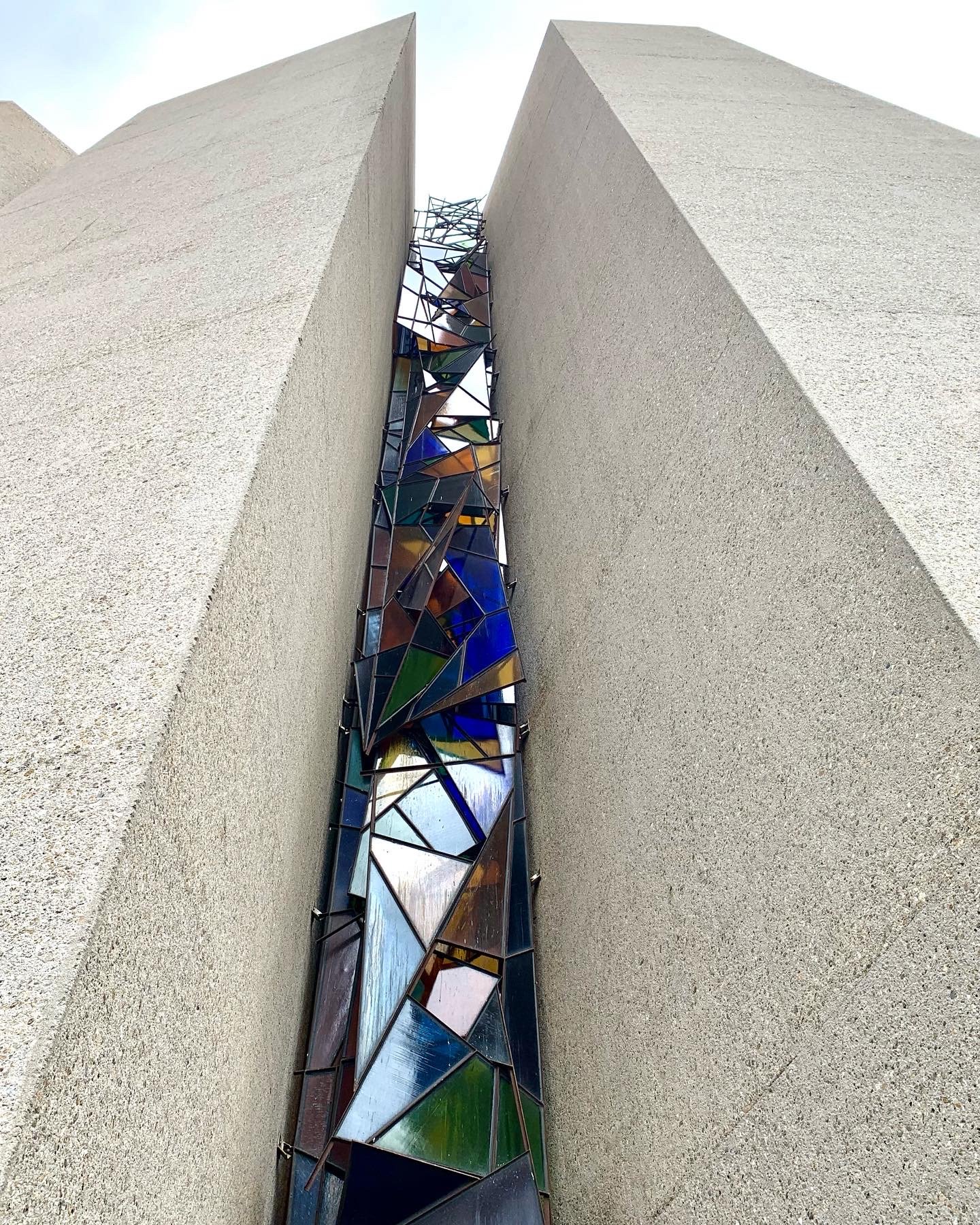

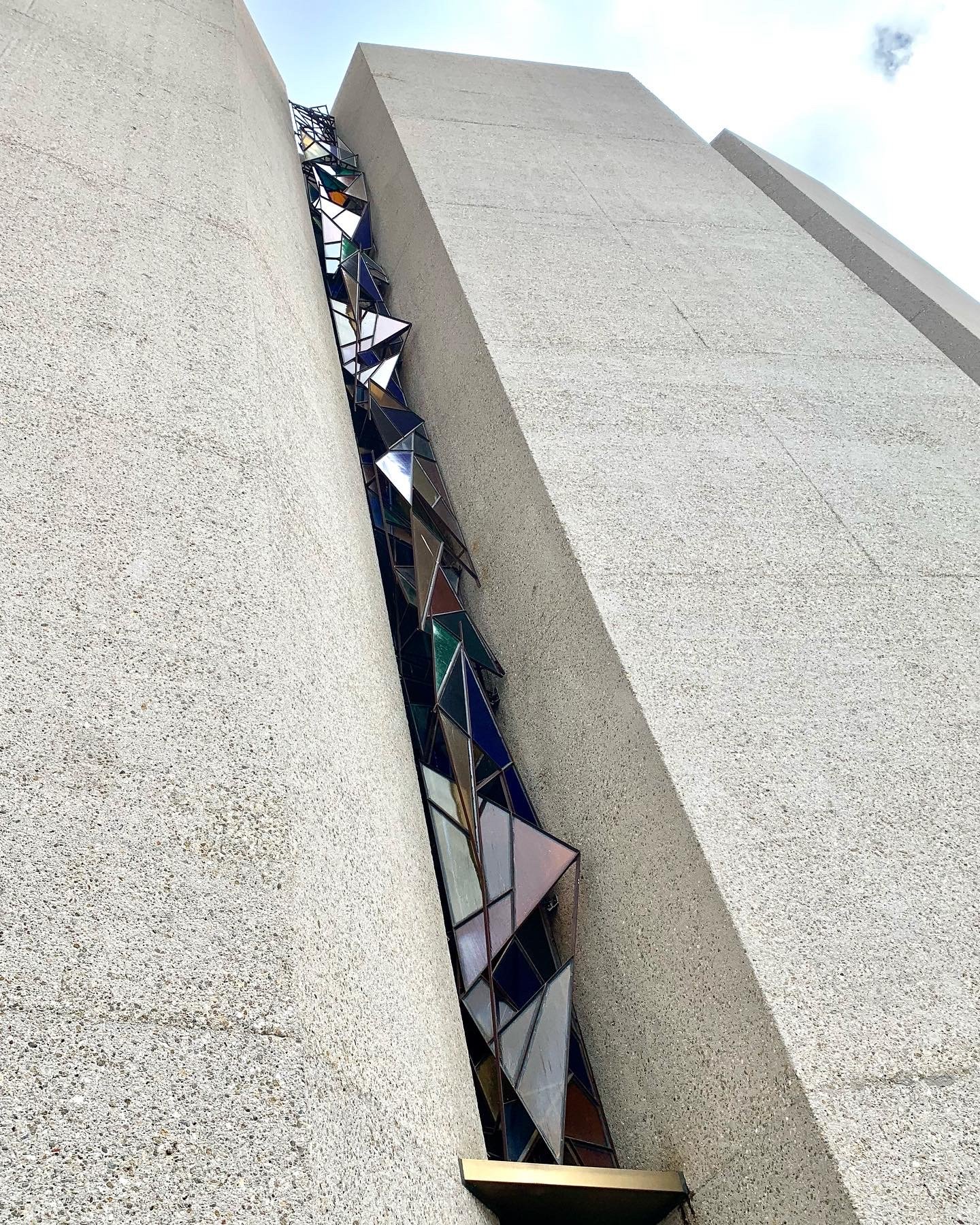
On a past visit, I had taken photos of the church exterior elevations which shows the brutalist style of the church. For this visit, I focused on taking closeups of the abstract stained glass art.
The description below is condensed from the Los Angeles Conservancy website:
St. Basil Catholic Church rises from the corner of Wilshire Boulevard and Kingsley Drive like an ancient fortress, girded with towers and bristling with jagged, three-dimensional windows of stained glass and iron. The church was built in 1969 to replace the older St. Basil, which had been constructed in 1920, badly damaged in a 1943 fire, and rebuilt.
The building designed by A. C. Martin and Associates evokes the feel of a very early Christian church or a monastery, with unadorned exterior surfaces in a Brutalist style incorporating twelve angular, irregular concrete towers with a rough finish that exposes the aggregate.
The towers are laced together by astounding stained glass windows designed by artist Claire Falkenstein.
A spare landscape of sinuous trees in wall-like planters, designed by landscape architect Emmet Wemple, accentuates the base of the building and draws the eye up to the tall towers.
Wilshire Boulevard Temple, A.M. Edelman, S. Tilden Morton, David C. Allison, 1929
Audrey Irmas Pavilion, OMA, 2022
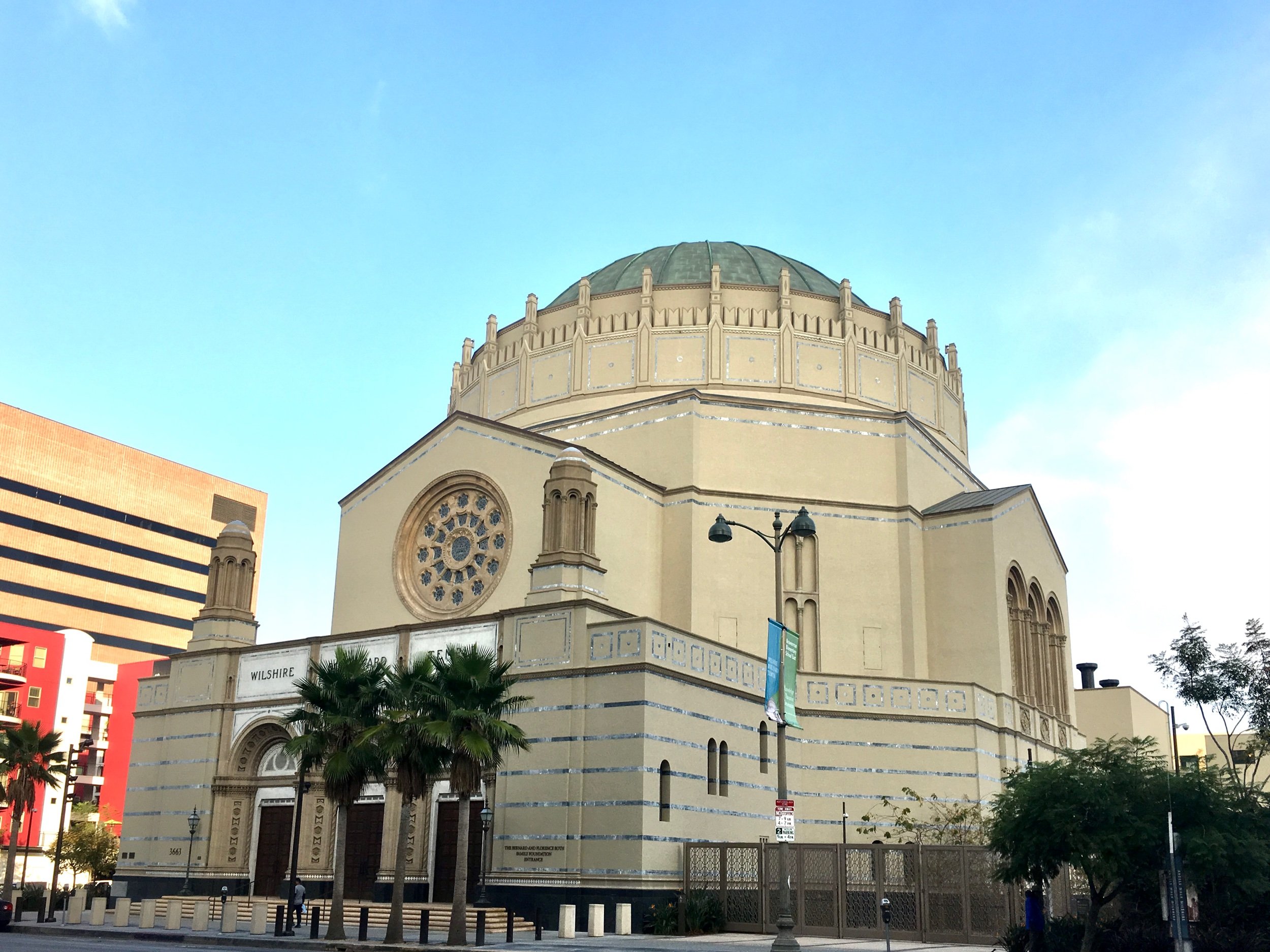
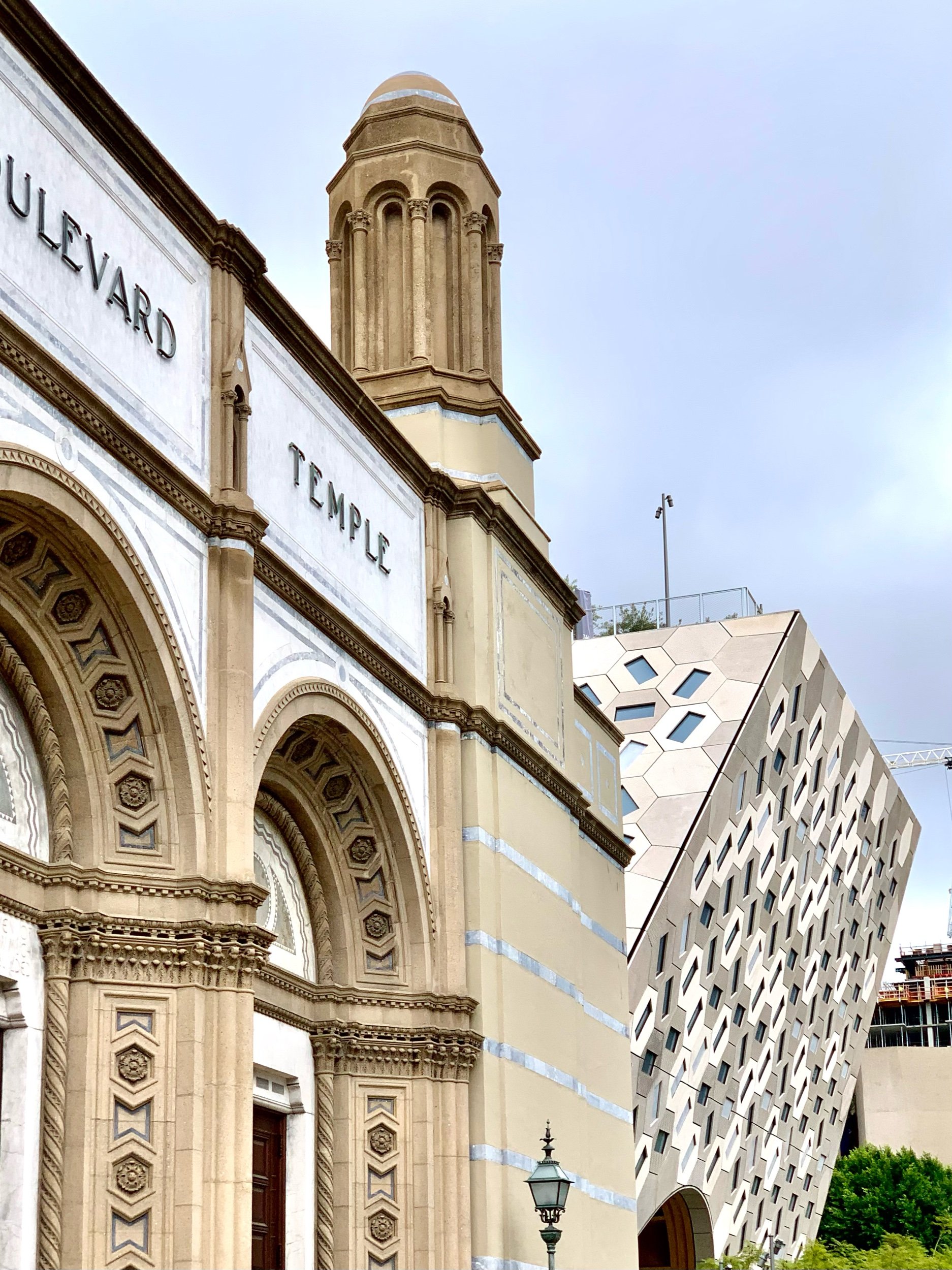
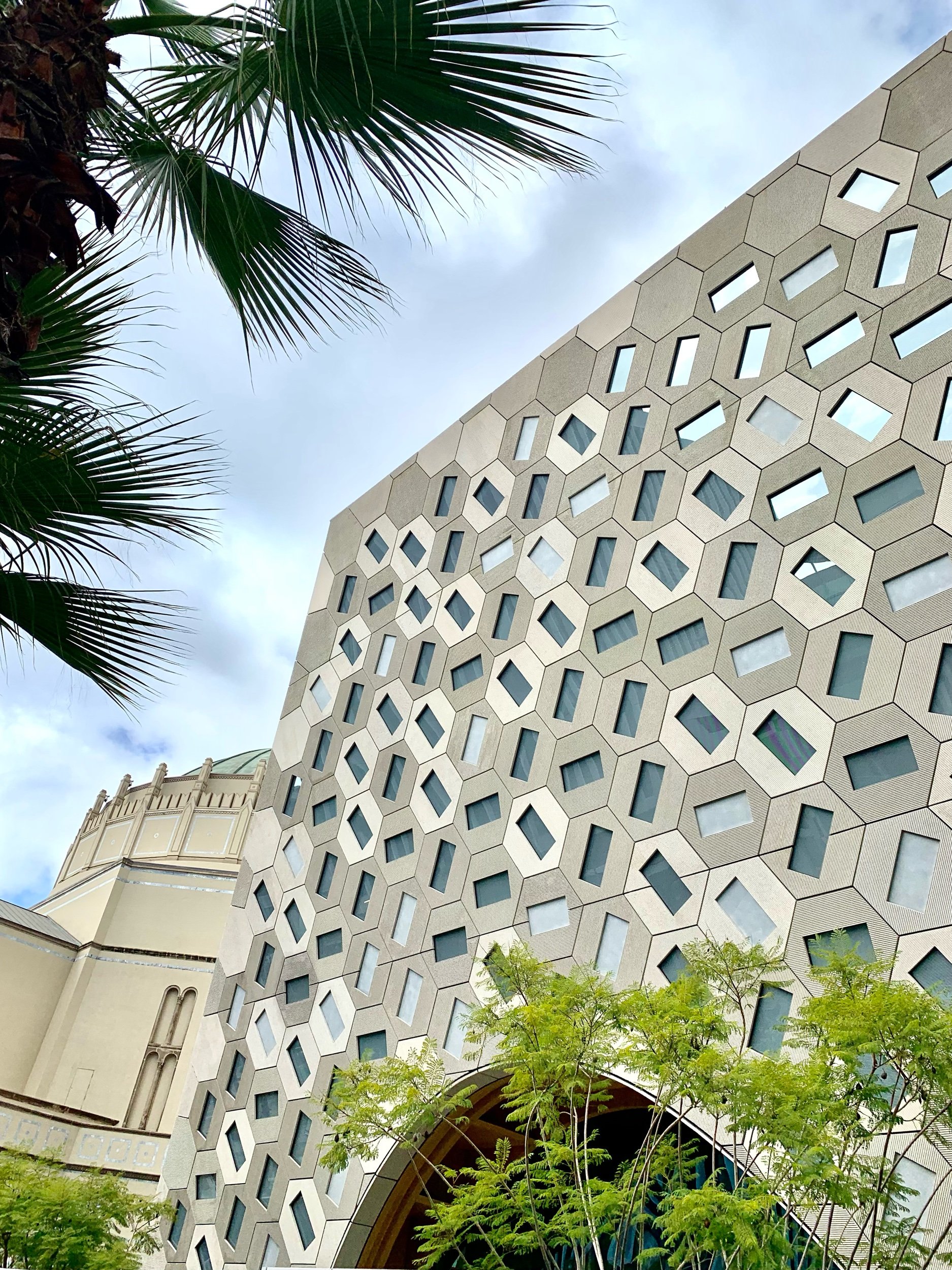
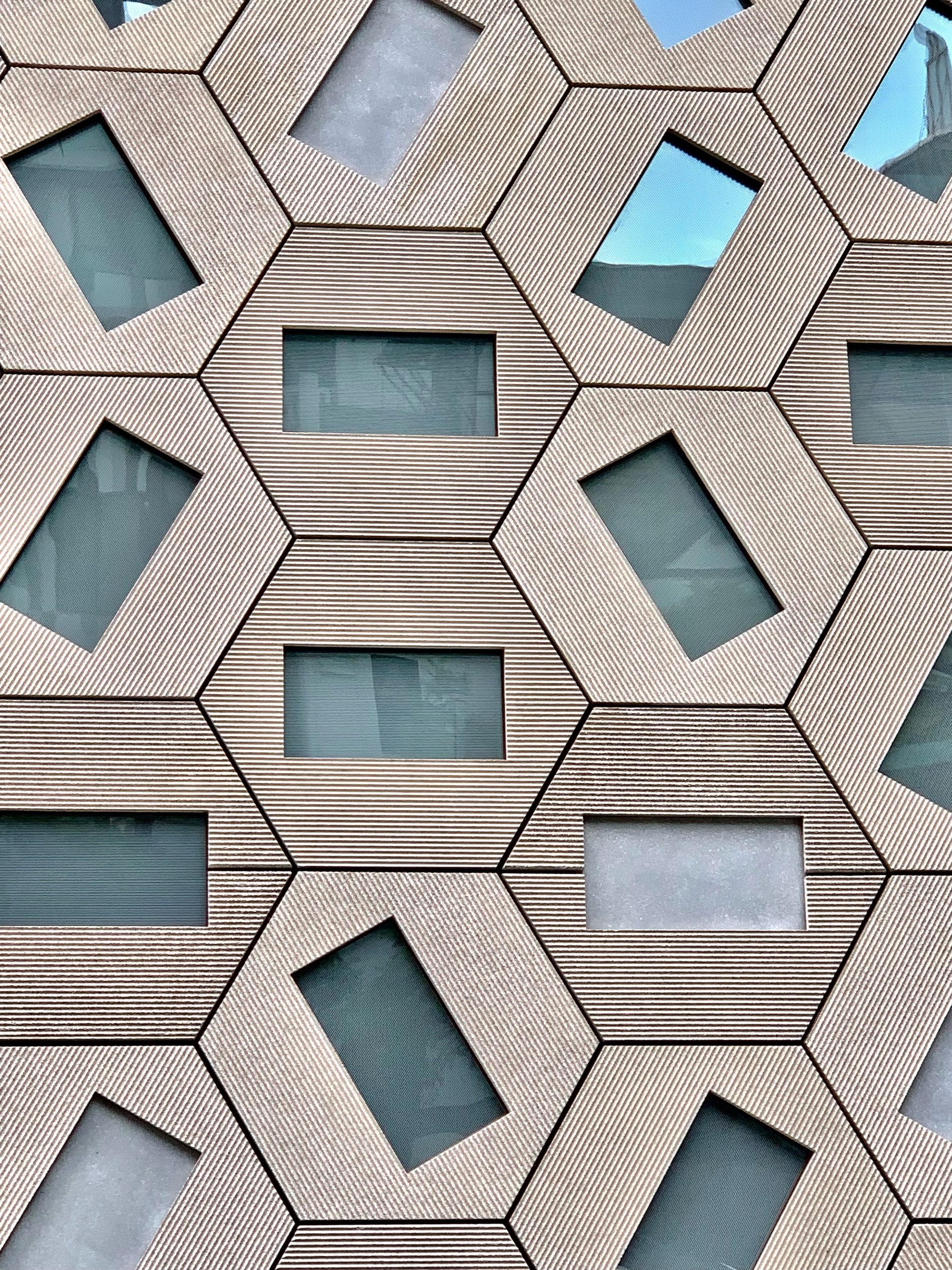
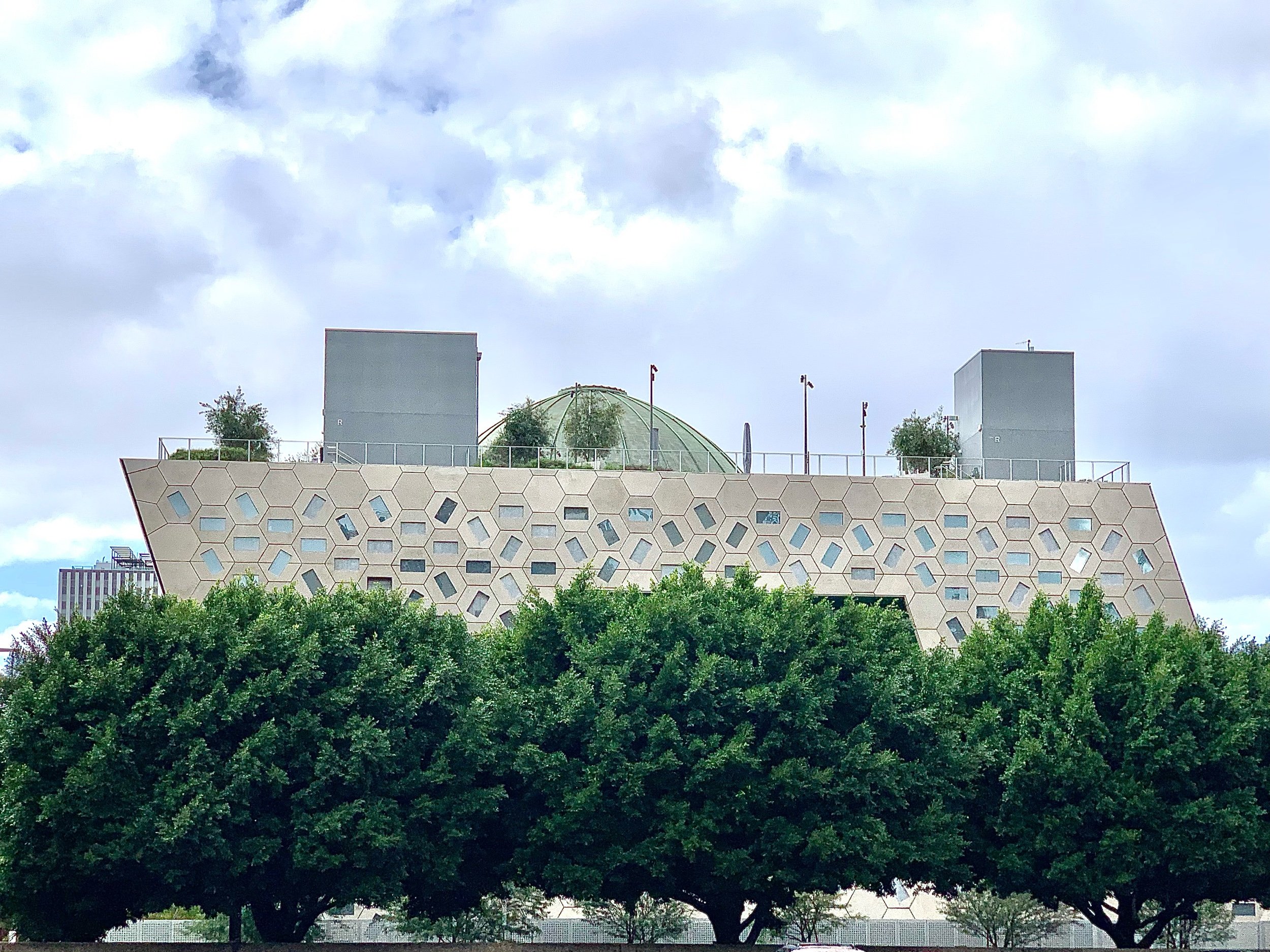
Wilshire Boulevard Temple, known from 1862 to 1933 as Congregation B'nai B'rith, is the oldest Jewish congregation in Los Angeles, California. Wilshire Boulevard Temple's main building is a City of Los Angeles Historic Cultural Monument and is listed on the National Register of Historic Places.
I was excited to view the Audrey Irmas Pavilion, the newest addition to the Temple’s campus of buildings.
The description below of the Temple is from the Los Angeles Conservancy website:
Its Wilshire façade combines a traditional Romanesque three-arch portal and rose window with a vast Byzantine dome spanning 100 feet and rising nearly 140 feet above street level.
The spectacular interior of the Edgar F. Magnin sanctuary is resplendent with black Belgian marble columns, teakwood doors, gold altar fixtures, and bronze chandeliers.
As a gift to the synagogue, the Warner brothers, founders of the famous Hollywood studio, commissioned artist Hugo Ballin to design breathtaking murals depicting 3,000 years of Jewish history.
The description below of the pavilion is from the architect’s website:
The facade draws from the geometries of the temple’s dome interior. A single hexagon unit with a rectangular window is rotated to reflect the program within and aggregated to create a distinct pattern. The panels enhance the building’s volumetric character while adding a human-scaled texture that breaks down its mass.


